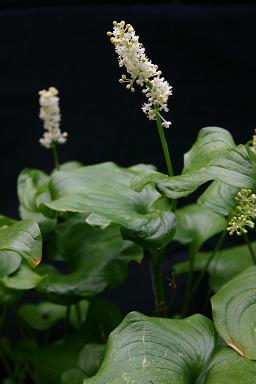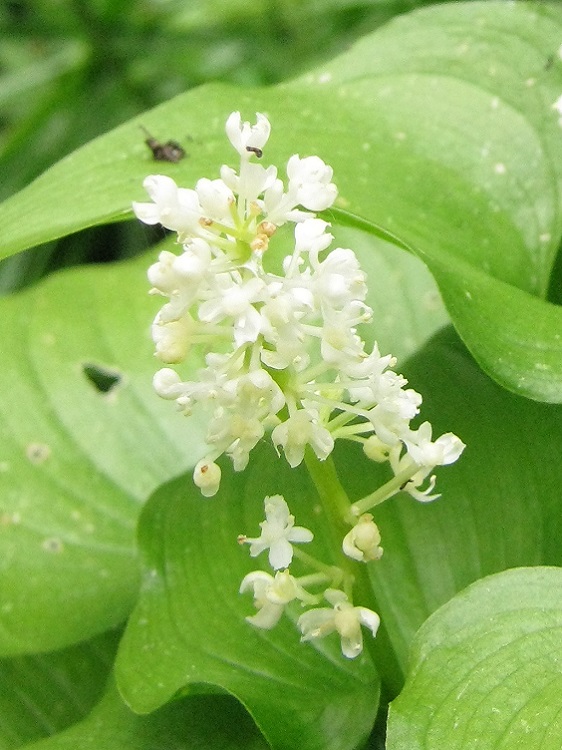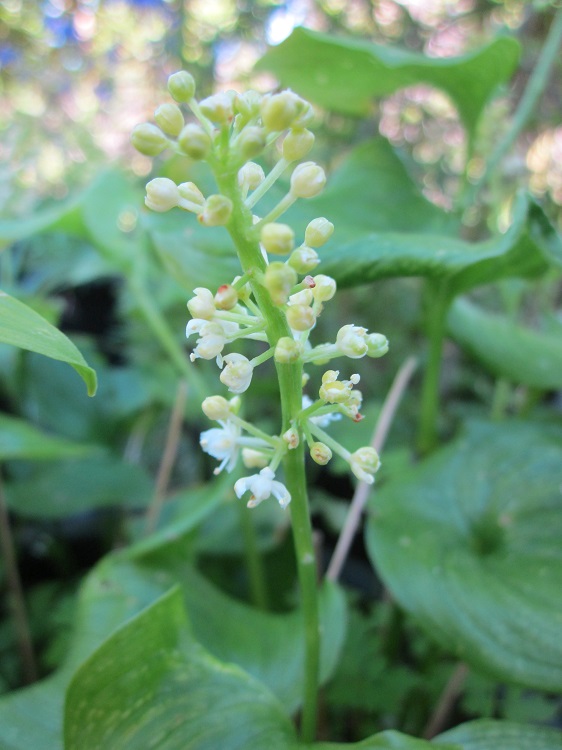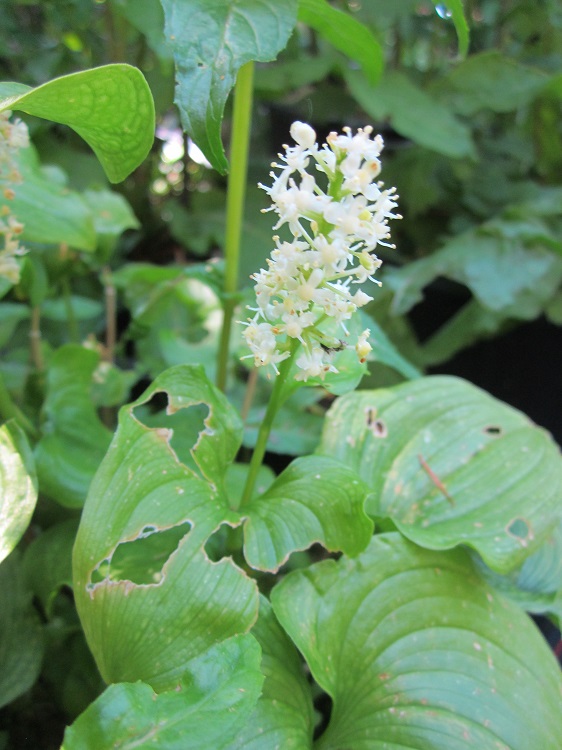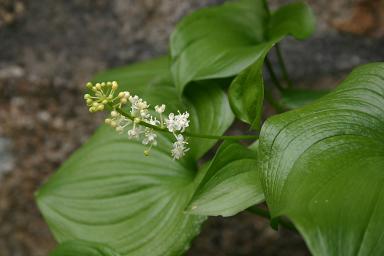 |
A vigorous low creeping plant, with fluffy spikes of white flowers in May. Good ground cover in dappled shade. If I am going to be brutally honest, it suffers from the same affliction as the grasses that have recently become so trendy. It makes a really good subject for photographs , but all the pretty photographs of detail are not enough to make it into more than just convenient garden filler. I bought it from Southcombe Gardens, their label said: "Low mat. Small fluffy white flowers in spikes up stems to 1ft. Cool humusy soil. Easiest in dappled shade." Writing about Mallet Court Nursery in the Journal of the Royal Horticultural Society, Arthur Hellyer said: "Maianthemum dilatatum also came from Ullung Do and Gordon described with delight seeing its red berries 'dancing in the sunlight'. This pretty herbaceous carpeter is closely related to M. bifolium, a rare British native, and some botanists regard it as an Asiatic form of that species." Plants of the World online says: "The native range of this species is Mongolia to Japan, Alaska to NW. California. It is a rhizomatous geophyte and grows primarily in the temperate biome." The California Native Plant Society says on its Calscape website: "Maianthemum dilatatum (Two-leaved Solomon's Seal or False Lily of the Valley) is a common rhizomatous perennial flowering plant in the Ruscaceae Butcher's Broom) family. It is native to western North America from northern California to the Aleutian islands, and Asia across the Kamchatka Peninsula, Japan, and Korea. It grows in coastal temperate rainforests, and is often the dominant groundcover plant in Sitka Spruce forests. The plant produces an erect, unbranched stem up to about 40 centimeters tall. A non-flowering shoot bears one smooth, waxy, shiny leaf up to 10 centimeters long and 5 to 8 broad, hence its scientific name (dilatatum means 'broad'). On plants that are flowering, 2 or 3 leaves are produced oppositely on the stems. The leaf is oval in shape with a heart-shaped base. Although it can be a vigorous spreader where conditions are right (shady and damp), it makes a good groundcover for shady northern gardens." | |
| 11th May 2006 | ||
